For years, the queer landmark sat derelict and abandoned. City officials deemed the structure an eyesore, its 4-story red brick facade speckled with broken and boarded-up windows.

But for many in the LGBTQ+ community, it was this very state of decay that beckoned throngs of queer beachgoers to a special section of Jacob Riis Beach; over time, laying claim to a place that no one else seemed to want.

Then in April 2022, the announcement came: the former Neponsit Adult Home on Beach 149th Street would be demolished.
Opened initially as The Neponsit Beach Hospital for Convalescent and Tubercular Children in 1918, its balconies overlooked the ocean, providing ocean air for sickly lungs. It has seen many iterations—a home for the aged in the 1930’s, Merchant Marine Hospital for TB during WWII, and another children’s facility in 1954. Closed once from 1955 – 1964, it reopened as the Neponsit Home for the Aged; and later, a city-run nursing home until permanent shut-down in 1998, when 282 residents were bussed to other locations in the middle of the night following a storm.
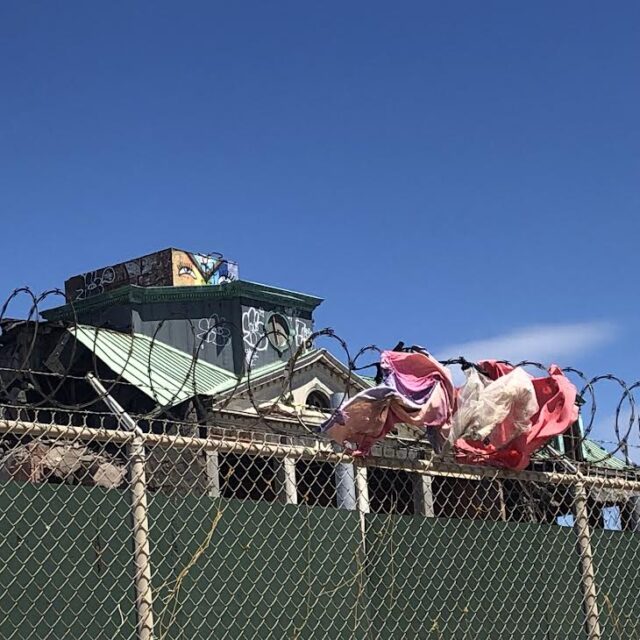
But the queer community always embraced the building’s wreckage, showed it love, coloring its walls with graffiti that shouted: “KNOW YOUR POWER.” According to the NYC LGBT Historic Sites Project, the spot first became a destination for sunbathing and cruising in the 1940s, and went clothing optional in the 1960’s. The building, in all of its iterations, provided a layer of privacy, and cast some shade (in a good way!). Riis Beach’s popularity has spanned generations.
Then it happened, with hardly a witness to the final demise. In early May 2023, yellow bulldozer claws began pummeling the last bit of structure to the ground. Briefly, the machinery spared the painted eyes that famously adorned the beach-facing top—eyes overlooking pink cloth affixed to a razor fence.

Days later, queer beachgoers could be seen seeking space to relax by the water. They were in for a rude surprise. The building was completely gone.
“I think that for everybody in the queer community right now, there’s a lot of fear that if this is taken from us, there’s not going to be a beach that is just for us,” Blue, a community member walking the boardwalk, told GO in May. Blue approached the usual entry point with two of their friends, but were met with yellow caution tape. The beach was closed.
The trio admitted to feeling emotional. “I think it represents a tension taken to the beach by people who are not using it, from a development and land value point of view,” offered Blue’s friend, Jay. “Having an abandoned building there decreases the likelihood that the average person might want to go there. And so queer people have used it as a safe place because people don’t care what happens over there. And now people do care. And all of a sudden there’s a beach.”
Indeed, in addition to the facility demolition, separately, a $12.3 million beach expansion project was underway at the start of beach-going season which found the queer section off-limits to Blue and friends. Commissioned by the Army Corp of Engineers, about 2.5-3 miles off the Rockaway coast, a ship had been dredging up sand and pumping slurry back to shore to build out the area, according to Megan Place, Project Manager with Great Lakes Dredge & Dock Company, LLC.
“Sure, we can just choose to set up on the farthest borders…but that’s encroaching more upon the space that has historically been occupied by cis heterosexual families,” Blue added.
Quincy Mangi, 19, was also upset to learn about the changes underway around “The People’s Beach,” as Riis is also known. The college student has memories dating back to early childhood, and recalls celebrating birthdays on the sand. “It’s like home. My mom’s been going since before I was born. I’ve been going my entire life…It feels very welcoming. My mom, my sister and I are all queer.”

It was important for Quincy to grow up around role models at the beach, people she could look up to, before she knew she was bi: “Seeing people who were confident in their own skin, confident in their own body and queerness.”
Quincy is concerned about the future of this haven. “It’s really awful to think we can’t just have one thing. This one beach where it’s safe and peaceful,” she told GO.
To be sure, the community put up a good fight. It got creative and vocal about what would become of the space, owned by the NYC Parks Department.
Desiree LaVecchia started a petition two years ago to the Parks Commissioner: “…The removal of these structures will leave Riis exposed, and will effectively open the door for our community of beachgoers to be harassed,” the petition stated. “That the initial planning process for the demolition of buildings at a queer beach has not included queer community echoes the process for the Christopher Street Pier, which disregarded the black and brown, queer and trans community.”
Black Trans Lives Matter Movement force Ceyenne Doroshow and GLITS (Gays & Lesbians Living in a Transgender Society) initiated efforts to secure the building as a historical landmark, and safe haven. GLITS set up a booth for an oral history project last summer, noted Blue and friends.
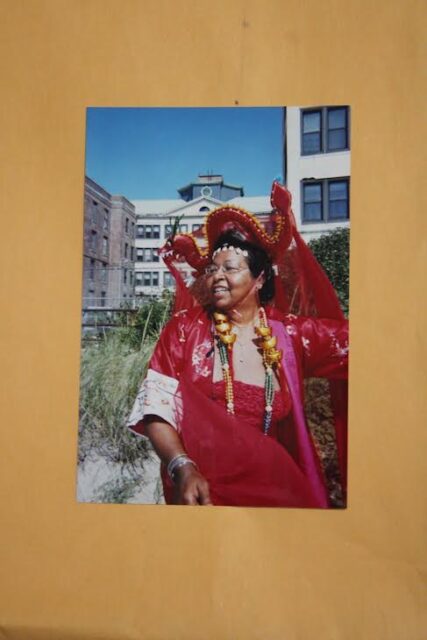
There are many stories to tell. Transgender activist, Stonewall survivor, and former Anti-Violence Project counselor, Victoria Cruz is known as “the Queen of Riis.” The 77-year old first set foot on Riis’ sacred sands in 1963, back when the old age facility was up and running. She remembers sunbathing and hearing the concerts in the gazebo that were put on for the elderly residents, how the patients would be taken out for lunch. “I loved to go on Sunday mornings because of the church services,” Cruz recalled. “They played the most wonderful American gospel I ever heard.”
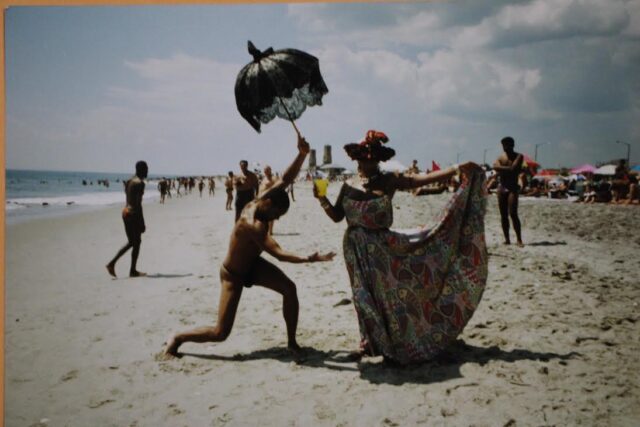
In fact, the gay folks sometimes lent an assist when the residents snuck out of the nursing home for a frolic on the beach. “We would tell them when the guys were coming so they could run back to the premises,” Cruz laughed while speaking to GO.
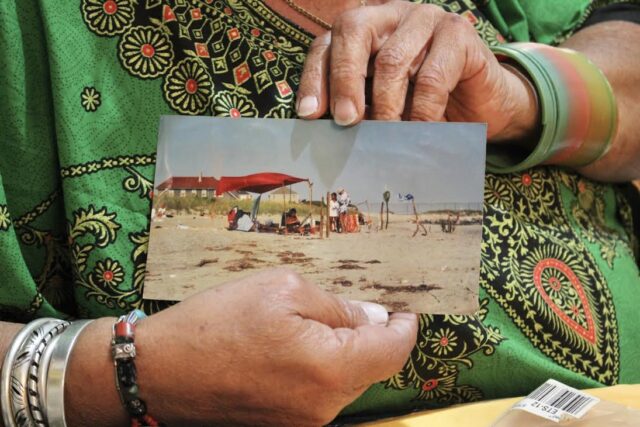
She believes that the structure was never unsafe – that Giuliani wanted to shut it down because it wasn’t making money for the city and used a stormy night in 1998 as an excuse to empty out the building. “It went through Irene, Sandy, and through all the hurricanes and not one piece of that building fell down,” Cruz said. “Even the gazebo was still standing after Sandy while all the other houses in Rockaway close to shore were demolished.”

“I’m sorry that the building had to come down. I thought they would build something for the community, or people in need of hospice,” Cruz lamented. “…the sounds of the sea, the sun, the gulls…make them enjoy life more, especially in their last days. I’m sorry that didn’t happen.”
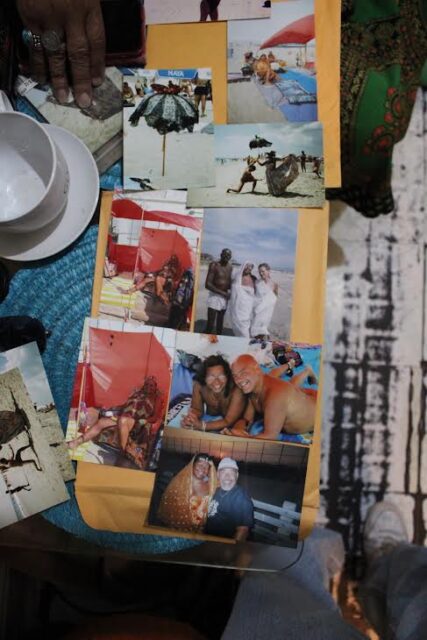
There will be no bringing the building back, and some in the community are now turning their attention toward what will become of the space. But there is good news. Late day on Saturday, July 8th, 2023, Rebecca, 33, and Jill, 34, headed down the boardwalk after a day by the water, a huge rainbow flag in tow. The newlyweds ventured to the beach that day, unsure as to whether people would even be gathering. But there were a few hundred people on the sand.
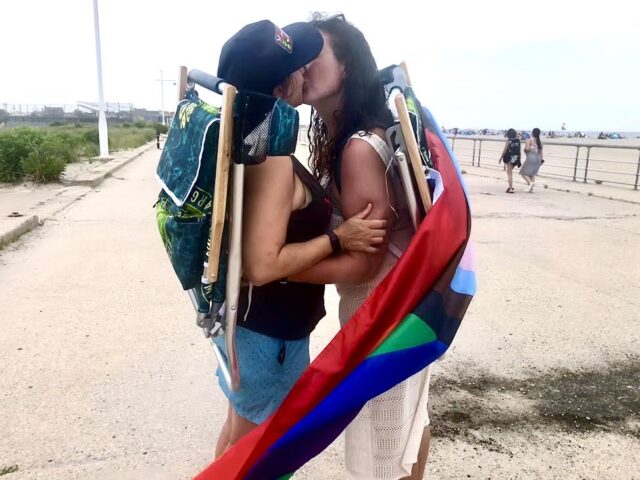
“It’s as crowded as ever,” Rebecca happily told GO. While tearing down the building felt like destroying a sacred space, she never questioned whether people would continue to gather. “The queers always know where to go.”
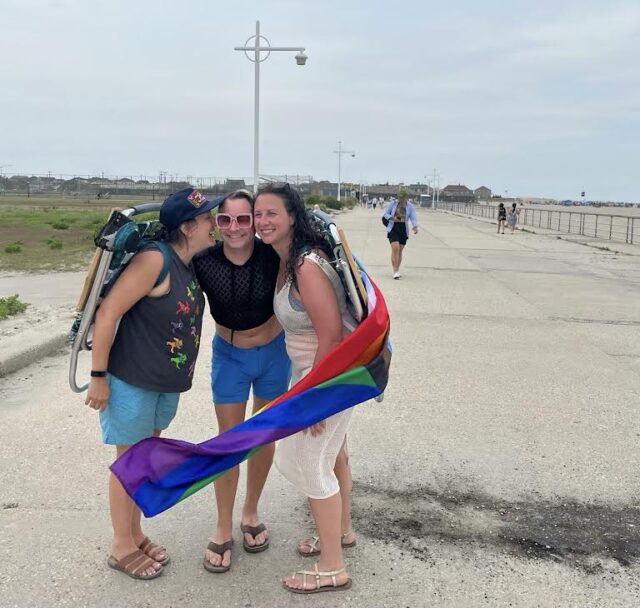
Another beach-goer, Noah De Simone, 47, spoke to the collective concern about how the 5+acre space might be used going forward. Will some new development invite more of a mainstream presence, more scrutiny, and possible harassment? A parking lot, hotel, or playground? From Noah’s perspective, the old ruins had been an “oasis” and “little secret corner.” But the Brooklyn resident was optimistic.
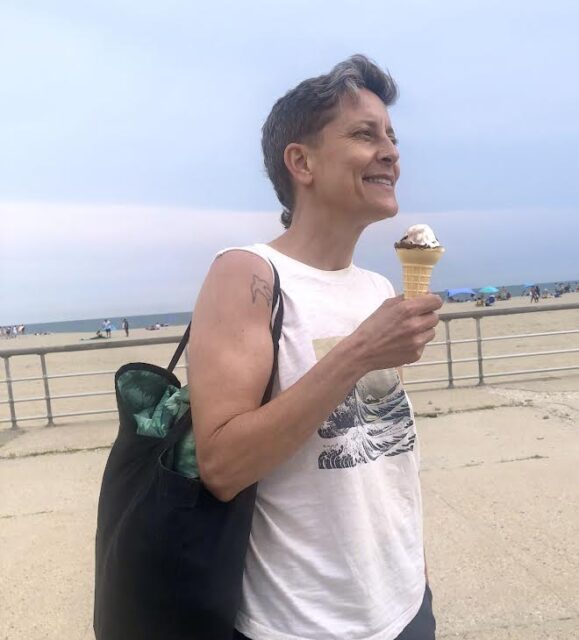
“This beach has been a queer beach for a long time, and there’s a really strong queer presence here. It’s not just a handful of people. It’s hundreds of people that come here. And I hope it stays queer forever.”

What Do You Think?